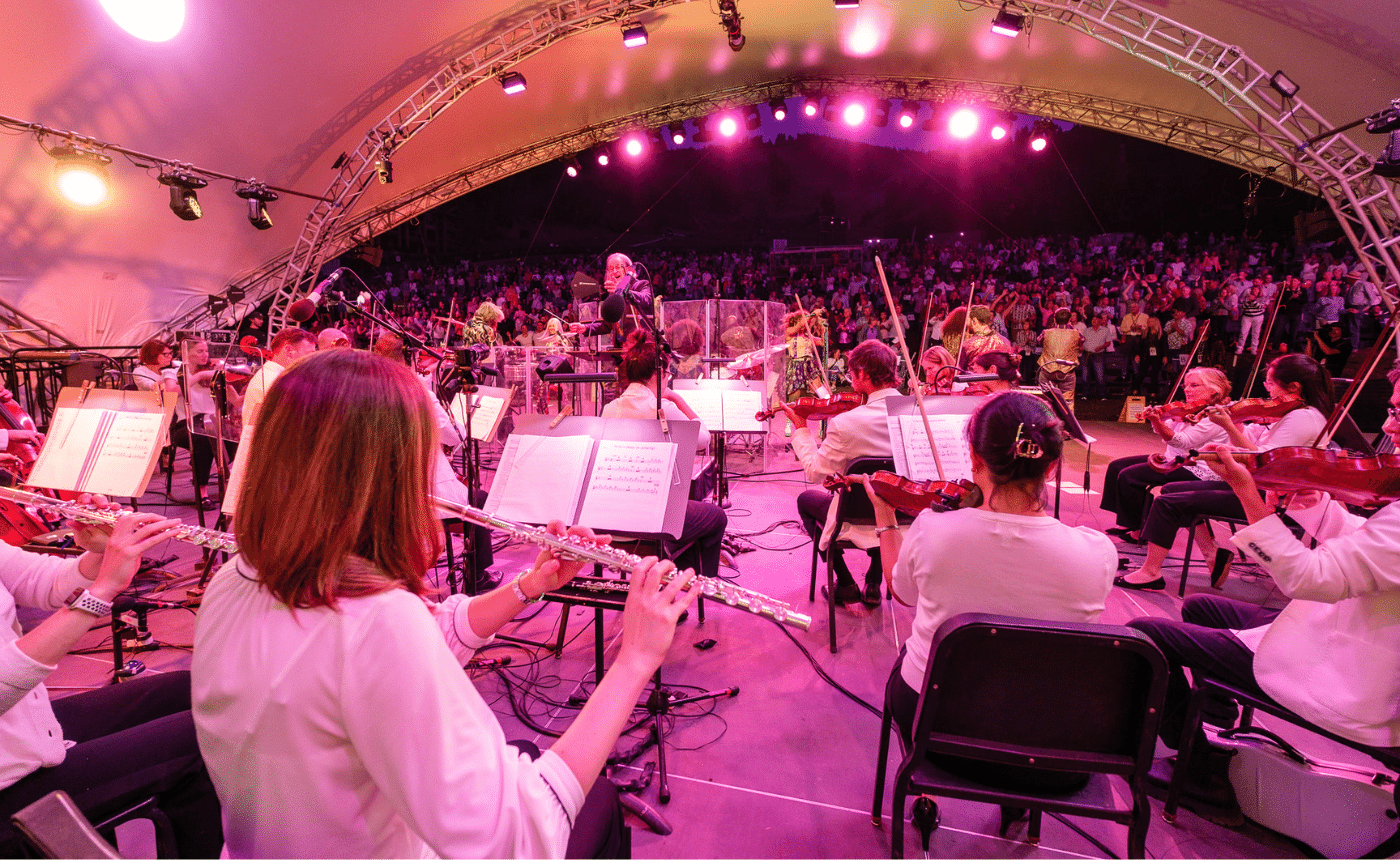Strauss – Suite from Der Rosenkavalier, Op. 59
Richard Strauss (1864 — 1949): Suite from Der Rosenkavalier, Op. 59
Instrumentation: 3 flutes, 3rd doubling piccolo, 3 oboes, 3rd doubling English horn, 3 clarinets, 3rd doubling E-flat clarinet, bass clarinet, 3 bassoons; 4 horns, 3 trumpets, 3 trombones, tuba; timpani, bass drum, crash cymbals, glockenspiel, Ratchet, snare drum, tambourine, triangle, celeste; strings
Performance time: 21 minutes
Background
Back in 2014, when we marked the sesquicentennial of Richard Strauss’ birth, he was celebrated mainly for his brilliant operas. But in 1905, when he composed his opera Salome, he was known mainly as a pianist, conductor, and the composer of captivating tone poems. While they were superbly crafted, they were hardly controversial. His two earlier attempts at operas were critical setbacks in an otherwise fast-track career. And his father, renowned as a virtuoso of the French horn, had groomed his son’s musical education carefully (perhaps too carefully?), embargoing the music of Richard Wagner for fear of its “dangerous” operatic ideas.
In 1905, things changed so markedly for Strauss that it is difficult to think of another composer — indeed, any famous artist — who was so fully identified with both scandal and respectability in his or her own lifetime. His shockingly sexualized Salome (based on Oscar Wilde’s play) catapulted him to international notoriety; instead of backtracking, he followed it with the equally scandalous, Freudian Elektra (based on Sophocles’ tragedy). His beloved opera Der Rosenkavalier, if not exactly an apology to the outraged Viennese public, is a nostalgic backward glance to 18th-century Vienna modeled to some degree upon Mozart’s The Marriage of Figaro. Composed in 1910 and 1911 with the librettist Hugo von Hoffmansthal — his collaborator on Elektra — it is old-fashioned, modern, timeless, and as deliciously caloric as Herr Sacher’s torte.
Born at the end of Western classical music’s Romantic era, Strauss had a long, productive life (1864 – 1949). In his 20s, he established himself as a dazzling musical technician with superb keyboard technique. His mastery of complex, inventive harmonies gave hope to listeners in the post-Brahmsian, post-Wagnerian world that there were still musical frontiers to explore without abandoning tonality altogether, as the Second Viennese School was doing under the leadership of Arnold Schoenberg and Alban Berg.
Strauss established his early reputation as a composer with lushly entertaining, vaguely programmatic tone poems. It’s possible to surmise the plot points that underlie various musical passages in each, and to hear the innate theatricality that would lead Strauss to write more than two dozen operas. But most impressive is the construction of Strauss’s densely chromatic chords and their dizzying changes. Musicologists sometimes analyze a symphony in terms of how a composer “gets out of” each movement; as Strauss leads us through exotic modulations, at least half the fun is marveling at how he gets where he’s going, leading us back to his tonic key. To many listeners, Strauss had gone from traditional composer to modernist rebel with Salome and Elektra. But for his own artistic reasons, he had long been nurturing the idea of writing a lighter work in the manner of Mozart’s The Marriage of Figaro. The result, Strauss’s 1911 masterpiece Der Rosenkavalier, was like an irresistible valentine to the public that felt Strauss had abandoned them. All was forgiven.
Der Rosenkavalier became something different from what Strauss and Hoffmansthal, the most important German writer of his generation, had in mind. Correspondence between the two shows how the opera seemed to run away with them. The original protagonist was to be a charmer suggested by Mozart’s Cherubino — a teenage boy played by a mezzo-soprano. The setting was to be Vienna in the mid-18th century, the time of Figaro’s Seville; and the opera was to be filled with melody, romance and waltzes, even though the waltz did not yet exist in the 18th century. By the time the opera was finished, it was longer and more philosophical than either artist had anticipated, and the character of the Marschallin — who doesn’t even appear in the opera’s second act — had come to dominate the drama.
What to Listen For
Der Rosenkavalier is filled with gorgeous waltzes and versatile leitmotifs, enough to provide two orchestral suites that don’t quite manage to crowd in everyone’s favorite moments from the opera. The most famous of these waltzes has a melody so perfect that it seems always to have been there — indeed, the lecherous Baron Ochs sings it as if it were a traditional (if bawdy) song. (“With me, no night will be too long for you…no room too small for you.”) It sounds lush and singable when voiced by an operatically trained bass-baritone, but don’t try humming this melody at home. With its deceptively tricky stepwise modulations in minor thirds, it will defy your best efforts in the shower.
Another melody really is based on an Austrian folk song, but in Strauss’s hands it is totally transformed — rendered in two parts as the culminating duet of two young lovers, then surrounded by breathtaking, densely chromatic chords in the high woodwinds. “It’s a dream,” they sing, and indeed it is, as Strauss’s inimitable harmonies evoke twinkling stars.












